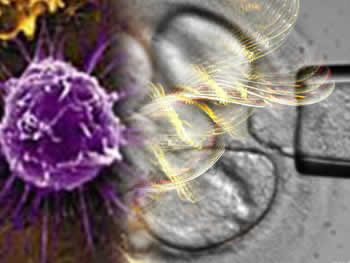
terça-feira, 20 de maio de 2008
MEDLINE
We have previously demonstrated that induction of apoptosis was observed in the smooth chorion trophoblast cells of human fetal membranes prepared at term, and that apoptosis progressed rapidly during in vitro incubation of the tissues. Furthermore, we identified the contribution of ROS production system (e.g., oxidant enzymes, such as iNOS and Cox-2) to the apoptosis induction in the chorion cells, suggesting an important role of the two inducible enzymes in the induction process. In this study, we examined the role of ROS elimination system (e.g., antioxidant enzymes, such as glutathione peroxidase (GPx) and catalase) in the apoptosis induction of the chorion cells, since the apoptosis induction by oxidative stress is a result of imbalance between production and elimination of ROS. Treatment of chorion and amnion cells with mercaptosuccinic acid (MS, GPx inhibitor) and 3-amino-1,2,4-triazole (ATZ, catalase inhibitor) resulted in an inhibition of GPx and catalase activity, respectively. Furthermore, incubation with MS alone induced apoptosis in the chorion cells and apoptosis level was enhanced by the addition of ATZ, while ATZ alone hardly induced apoptosis in the chorion cells. However, none of these reagents induced apoptosis in the amnion cells. Moreover, an increase of the level of hemeoxygenase-1 gene expression was observed only in the amnion cells when both antioxidant enzyme activities were suppressed. Therefore, we concluded that GPx played a more critical role than catalase in the control of the apoptosis induction of the chorion cells, suggesting that the threshold levels of stress tolerance in the chorion cells are much lower than those in the amnion cells.
Assinar:
Postar comentários (Atom)

Nenhum comentário:
Postar um comentário